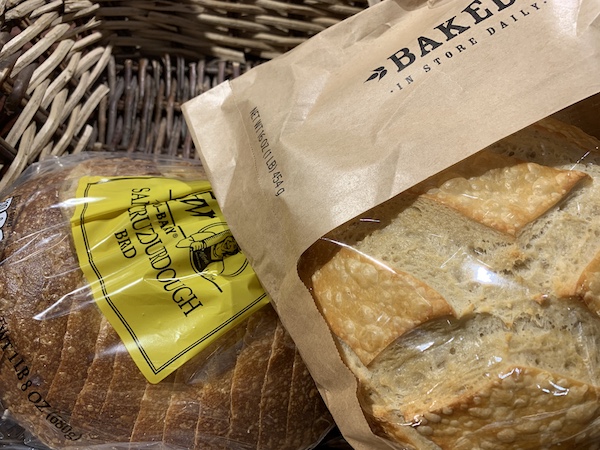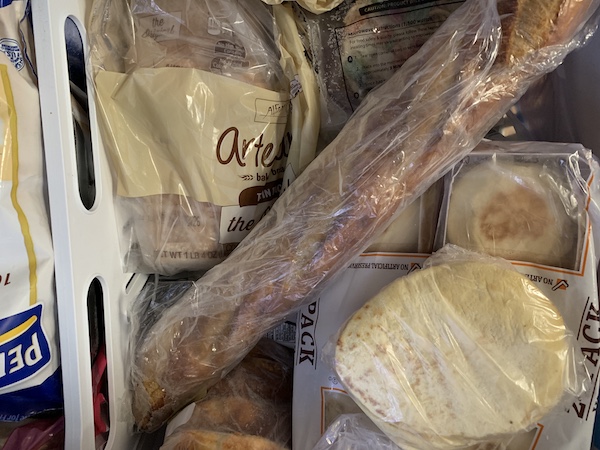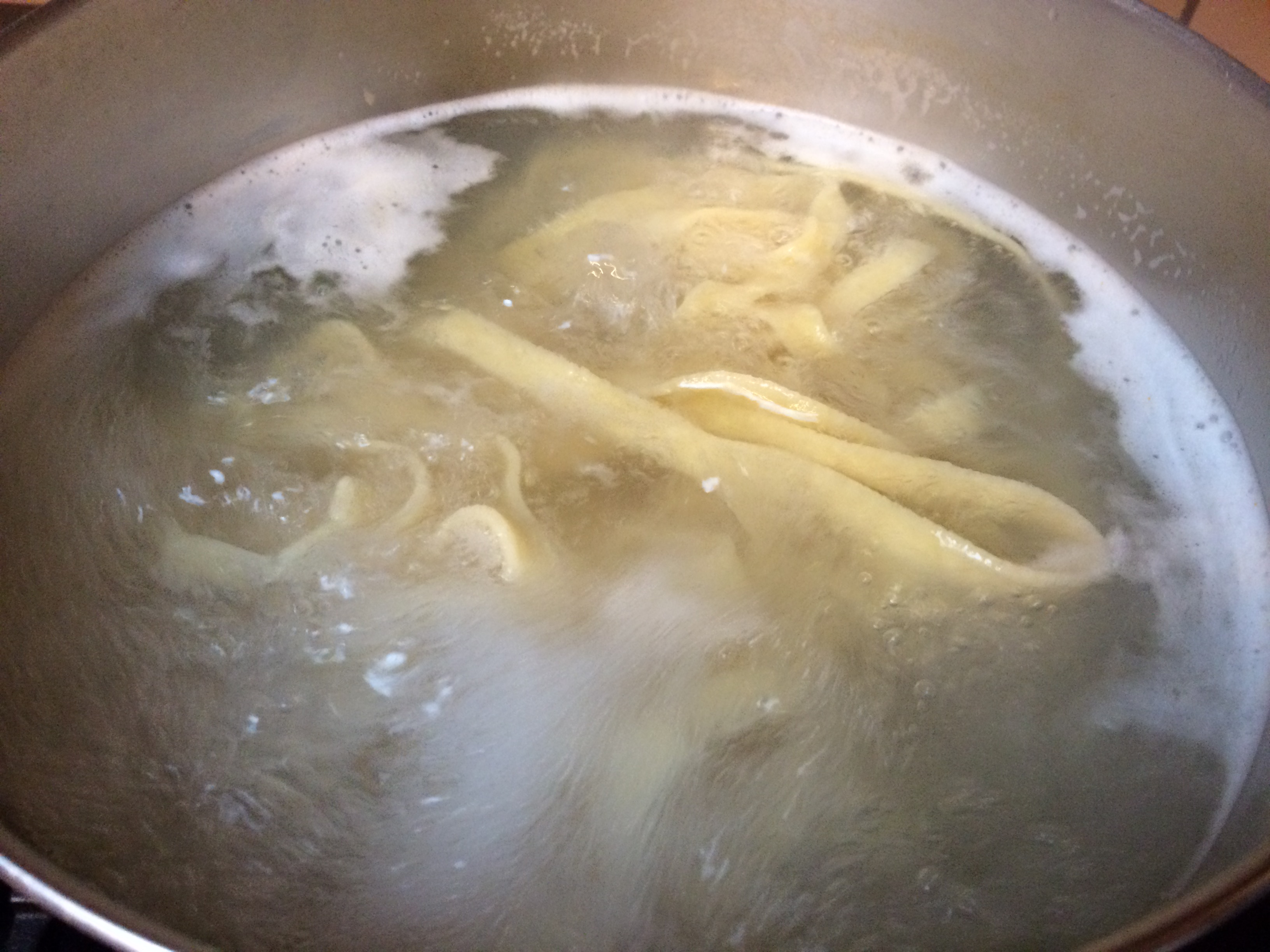How to Keep Bread Fresh
To a baked good fanatic such as myself, there’s nothing quite like a fresh baked loaf of bread straight from the oven with a smear of soft butter. I’m making myself hungry just typing that sentence! The point is, bread needs to be kept as fresh as possible at all times to be at its best (unless you’re making stuffing or a few other dishes).
Although that’s just not possible unless you’re constantly baking or live next door to a bakery… it is possible to properly store bread in order to keep it as close to fresh as possible.

How to Keep Bread Fresh
Bread Storage Tips
Paper or Plastic?
The paper or plastic question, when speaking of bags, is more important than usual when the contents of said bag is bread.
Breads that are crusty on the outside and soft on the inside will thrive fantastically in a paper bag… but only for a day!
Breads with a soft crust will last much better and stay true to themselves when wrapped in a plastic bag.
That’s true for the first day at least.
Both types of bread will keep for a longer amount of time when placed into a plastic bag (or wrapped in plastic)… but don’t suffocate that hard crusted bread in plastic until after it has been enjoyed. The leftovers (if there are any) of crusty bread will need to be bagged in plastic so that the crunchy doesn’t permeate into the inside of the loaf. If breads such as Italian, French and Dutch are kept in a paper bag for more than a day or two they will become quite hard throughout. If they are headed for croutons or breadcrumbs, this can be OK. Once these breads are sealed inside a plastic bag, the crusty crust will soon become a chewy crust. If it becomes too chewy to even bite, simply pop it into the oven for a few minutes to restore the crust. A light sprinkling of water before placing in the oven will further add to regaining the crunch.
Most breads purchased on the grocery shelf (not the bakery section) in plastic bags generally contain some sort of preservative. So, it will keep on the counter in the bag for several days and even longer depending upon the preservatives contained. Mold on bread (think science experiment) is an inevitable, it’s just a matter of time spent in plastic. If the package is heated, whether on an extremely hot day, placed on a window ledge in the sun or from placement too close to an oven, then the process will happen even more quickly.
Heartier breads, like sourdough and English muffins, will generally last for longer at room temperature than other softer breads.
Use the freezer.
The best way to keep bread fresh is, believe it or not, the freezer. The words fresh and freezer don’t usually combine in the same sentence, but in the case of bread the freezer is the best thing since sliced bread! Really, just place the loaf of sliced bread into a freezer safe bag and seal it tightly.
Here’s a section of our freezer filled with all different sorts of breads (shown below). Yes, looking at this picture it’s fair to say that we eat (or at least buy) too much bread. But, it will keep this way long enough to be slowly enjoyed until the whole lot disappears.

To Thaw Bread:
Simply take out only as many pieces as ready to use at the time. The slices defrost in mere minutes. Pop them, once thawed, into the toaster for breakfast. Make sandwiches for lunch boxes with the slices still frozen and see how easy that peanut butter now spreads across the surface. It will be unthawed way before lunchtime for soft enjoyment.
For whole frozen loaves of bread, simply let the loaf come to room temperature and then pop it into a pre-heated 350°F oven for about 7 to 10 minutes for fresh baked goodness whenever desired.
How to Keep Bread Fresh
Additional Info
Defrosting bread on the counter is safe, but proteins become unsafe if defrosted in this way. See our post on safe thawing methods for more information on thawing.
To find out how long bread lasts, see our bread page.
For ideas on what to do with stale bread, get some ideas here.
For other ideas on transforming different stale foods, check out this post of other food transformations.










